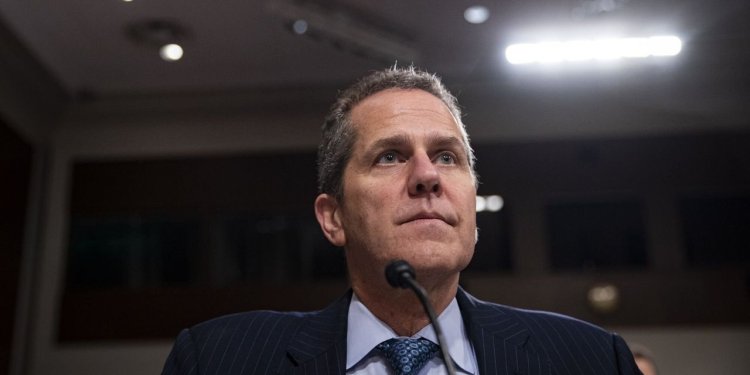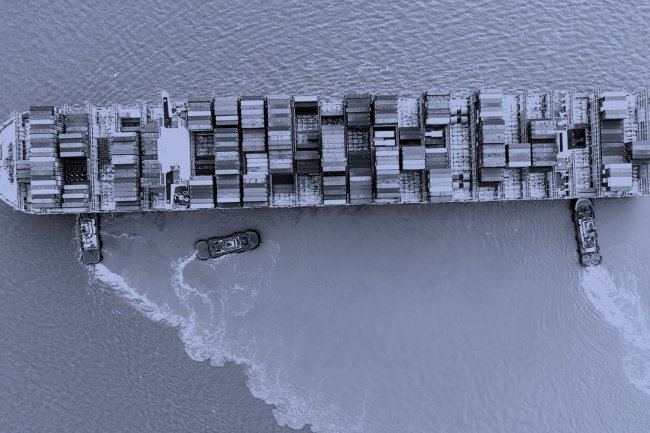America’s Biggest Banks Are Going to Need More Capital
Fed’s regulatory chief says move would help system’s resilience after string of midsize bank failures Michael Barr, the Fed’s vice chair for supervision, said the largest boosts in required capital would be applied to the largest, most complex banks. Photo: Al Drago/Bloomberg News By Andrew Ackerman Updated July 10, 2023 2:31 pm ET WASHINGTON—The Federal Reserve’s regulatory chief outlined steps to strengthen the financial cushions for larger banks, which he said would help boost the resilience of the system after a spate of midsize bank failures this year. “Events over the past few months have only reinforced the need for humility and skepticism, and for an approach that makes banks resilient to both familiar and unanticipated risks,” Michael Barr, the Fed’s vice chai


Michael Barr, the Fed’s vice chair for supervision, said the largest boosts in required capital would be applied to the largest, most complex banks.
Photo: Al Drago/Bloomberg News
WASHINGTON—The Federal Reserve’s regulatory chief outlined steps to strengthen the financial cushions for larger banks, which he said would help boost the resilience of the system after a spate of midsize bank failures this year.
“Events over the past few months have only reinforced the need for humility and skepticism, and for an approach that makes banks resilient to both familiar and unanticipated risks,” Michael Barr, the Fed’s vice chair for supervision, said in a speech Monday.
The changes, which regulators are expected to propose this summer, come after what Barr described as a holistic review of big-bank capital requirements. Under the plan, large banks could be required to hold an additional 2 percentage points of capital, or an additional $2 of capital for every $100 of risk-weighted assets, he said.
Capital is the buffer banks are required to hold to absorb potential losses.
SHARE YOUR THOUGHTS
Should regulators boost bank capital requirements? Why or why not? Join the conversation below.
The precise amount of additional capital would depend on a firm’s business activities. The biggest increases are expected to be reserved for the largest, most complex U.S. megabanks, Barr said.
Banks also would face more difficult stress tests to gauge their ability to weather a hypothetical recession, tougher executive-compensation restrictions and heightened liquidity requirements, Barr said. He also plans to make changes to improve the “speed, agility, and force” of the Fed’s bank supervision.
The biggest banks say they already have far more capital than they would need in any crisis. As evidence, they point to their stress-test results and their ability in March to pump $30 billion in combined deposits into struggling First Republic, which later failed.
The banks say the March crisis reflected a failure of some bank managers and regulators—not a systemic lack of capital. They also say higher capital rules will cause them to hold back more funds and limit lending, which they warn will hurt the economy.
“Capital isn’t free,” Kevin Fromer, the head of the banking group Financial Services Forum, said in a statement Monday. “Further capital requirements on the largest U.S. banks will lead to higher borrowing costs and fewer loans for consumers and businesses—slowing our economy and impacting those on the margin hardest.”
Barr estimated the increases would be covered in less than two years by bank profits. The first quarter of the year set a record high for bank profits, according to the Federal Deposit Insurance Corp., following on the heels of a boom in 2021 and 2022. Large lenders start to report second-quarter results this week.
Both the KBW Nasdaq Bank Index of big banks and the KBW Nasdaq Regional Banking Index, which tracks smaller banks that will face new rules, were rising Monday, reflecting in part expectations that profits will keep rising as the U.S. economy continues to expand.
One potential issue for investors: Analysts and executives have said stock buybacks and dividends, a Wall Street favorite, are likely to slow down while executives await the proposed rules.
“Many banks have already pulled back on capital return in preparation for potential increases in requirements,” said Jefferies analyst Ken Usdin in a research note last month.
Tougher rules were already on the way for the biggest lenders before the March failures of Silicon Valley Bank and Signature Bank sent tremors through the industry. Since then, regulators have said they plan to propose applying their toughest rules to banks with at least $100 billion in assets.
While regulators and legislators previously assumed the biggest risks to the financial system came from a handful of “too-big-to-fail” banks, this year’s failures show that line of thinking was wrong, Barr said, calling into question the manner in which regulators calibrate their rules.
“It suggests that we need to be careful about thinking about contagion,” he said.
Coming changes include steps to end a regulatory reprieve that had allowed some midsize banks to effectively mask losses on securities they hold, a contributing factor in the collapse of SVB. Supporters of the change say it would have forced SVB to address its mounting losses earlier as interest rates began rising and the value of its holdings declined. Regulators also are preparing to add to regional banks’ financial cushions by requiring them to raise long-term debt to absorb potential losses.
“Our recent experience shows that even banks of this size can cause stress that spreads to other institutions and threatens financial stability,” Barr said.
While the largest U.S. banks emerged from the pandemic in solid financial shape, Barr has signaled for months that he thinks capital requirements should be higher.
Much of his proposed overhaul would revolve around the last piece of capital rules that global policy makers agreed to implement after the 2007-09 financial crisis. The overhaul forced banks around the world to boost their capital cushions in hopes of preparing them to weather downturns without taxpayer bailouts.
Banks must have loss-absorbing buffers to account for the risks tied to their activities, but regulators say the way firms now measure those risks varies too widely. The last step of the overhaul, expected to be proposed in the U.S. as soon as this month, is aimed at making measures of riskiness more transparent and comparable around the world.
In a move that is likely to disappoint big banks, Barr said he planned to make no fundamental changes to other parts of the capital framework. Large banks have long called for easing a special surcharge that applies to global systemically important banks. Barr said he is only contemplating modest technical changes to those requirements.
—David Benoit contributed to this article.
Write to Andrew Ackerman at [email protected]
What's Your Reaction?













